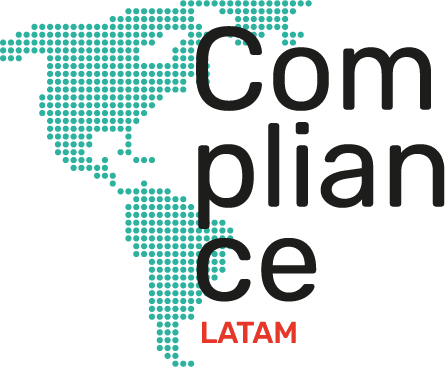
22-11-2023 | Noticias-en
Recently, a friend accustomed to the environment of large companies asked me the following question: what is it like to work in a Fintech from the Compliance perspective? Her curiosity, coming from a consolidated corporate world, sparked my reflection on my experience in this challenging universe.
Working in a Fintech is a journey full of exciting challenges and opportunities. The constant dynamics, the incessant search for disruptive solutions and, in my case, the immersion in the crypto world, make this path an exciting journey, even similar to the experience on a roller coaster.
In Latin America, a large part of the Fintech companies have been founded by young people, perhaps not entirely familiar with Compliance in formal terms, but who experience it intrinsically.
They begin with the desire to innovate and contribute to financial inclusion, aware of the immediate need to generate trust among users, investors and regulators. In this context, the culture of Compliance and good corporate practices becomes a fundamental pillar that shapes the identity and future of Fintech companies. More than complying with a series of regulations, it is adopting values rooted in ethics, transparency and responsibility.
In my case, I am fortunate to work in a Fintech where the Compliance team is not an isolated area, but rather a strategic ally at every stage of the process. We collaborate closely with development, finance, operations, legal, marketing, and other teams to ensure that each innovation is aligned with regulations, clear messages, and safe customer interactions. This culture not only permeates each line of code, but also in the decision making
and strategies outlined.
I have learned that speed in these companies is essential: adapting quickly to market demands and implementing innovations in an agile manner is a priority. However, this agility must not compromise integrity or compliance with regulations. This is where the culture of Compliance becomes the best ally, accompanying the business step by step to guarantee compliance with financial regulations, data protection, cybersecurity and
prevention of money laundering.
I have been able to experience how this mentality has allowed us to strengthen the credibility of the company in the market. In an environment where trust is key, Compliance must be the pillar on which reputation and sustainable growth are built.
As you can imagine, maintaining this culture of Compliance is not an easy task. It requires dedication, continuous education and an open mind towards adaptation. Regulations change, technology evolves and challenges multiply. Therefore, in these companies, Compliance must be a constant and collective commitment, where each person becomes a guardian of integrity.
Unlike what happens in large companies, those of us who work in Compliance in the growing Fintech industry have the opportunity to accompany these organizations from the beginning. And for its part, each role and function performed is essential to ensure that the culture of integrity is part of the company’s identity.
It is a nice challenge, to which I feel happy to be able to contribute with enthusiasm and dedication. I firmly believe that if Fintech companies follow this ethical, safe and reliable path, they will achieve sustainable success in the time they long for.
María Jesús Bustamante E.
Chief Compliance Officer Buda.com | Master of Laws ESADE Business & Law School ⎜UC Law

21-11-2023 | Noticias-en
Normally, we associate free zones with exports of goods and very frequently with medical devices. However, service exports in Cosa Rica, according to COMEX statistics, indicate that they have had an annual growth rate of 6%, reaching the figure of US$ 11,790 million in 2022 and of this a significant number has been focused in the technology.
Costa Rica expanded its focus to strengthen the services sector and continued to promote foreign investment from manufacturing companies dedicated to the technology and medical devices sector. This was possible by taking advantage of the country’s bilingual workforce and its strategic position in the region. To achieve this objective, the following are considered key milestones that allowed this transformation: i) introduction of high-tech services, ii) training of a highly qualified workforce, iii) the strategic positioning of the country for the region and iv) the expansion of the type of services that were sought to be brought to Costa Rica, this related to encouraging high-tech companies to be part of this group of investors.
Now, Costa Rica’s transformation into service-focused free zones is not going without challenges. On November 16, during the BLP Free Trade Zone Leaders Forum conference , there was the opportunity to discuss the challenges that currently plague companies under the regime with members of both the public and private sectors. Of which, it was possible to highlight:
Talent Retention: As the service sector continues to grow, the competition to find qualified labor has become an intensive task for new investors. Therefore, the country’s ability to provide a constant supply of this talent has become a challenge and one that the entire sector identifies as a key piece that the government must address. For its part, the government is looking for strategic allies from the private sector who together will help them address this issue. Therefore, it is evident that there is a need for both sectors to work together to create an action plan on this issue.
Global Minimum Tax: With the entry into force in some countries of the global minimum tax, there is uncertainty as to how Costa Rica will apply this rule and the way in which it will affect the free zone regime in the country. The comments from the public sector are aligned with the fact that there will be a need to reform and establish a new direction for the free zone market in Costa Rica. However, the goal is that the alternatives and changes that are eventually implemented are formed in conjunction with the private sector. Therefore, it is important to highlight that new changes are coming, but these changes can also come with new opportunities.
Education of the Specialized Workforce: Since talent retention is a major challenge, it must also be aligned with the creation of a specialized workforce. The country needs to continue building diversified curricula that allow the creation of a qualified workforce. To do this, the government aims to transform the way this workforce is educated. For their part, service companies highlight the investment they must make to train their workforce. However, it is clear that more work must be done hand in hand between both sectors so that the training process is achieved between a combination of work from both parties. For its part, the government recognizes that the work that companies do in this area has been vital to the growth of the country’s workforce.
Attention, the challenges are important, since through the growth of the service sector, Costa Rica has been highly benefited. According to PROCOMER studies, in 2021 free zones generated approximately 164,000 direct jobs. Likewise, of this amount, it has been estimated that 49% of the workforce has been used by service companies. The export of services from the free zone has also become an important source of foreign exchange earnings for the country. On the other hand, Costa Rica’s success in attracting foreign investment has boosted the country’s economic growth and strengthened international relations. Proof of this is the decision of the United States to partner with Costa Rica to promote and strengthen the country’s semiconductor industry.
Costa Rica’s path from the manufacturing-oriented free zone to an innovative and highly skilled service sector is an example of the country’s ability to transform and pursue economic growth. Betting on its strengths, such as investing in its education, developing its workforce, creating investment-friendly environments, has allowed the country to become a competitive player in the global services industry. However, as the country and the world continue to change, there are new challenges ahead that must be addressed. Therefore, the government is right to continue its investment in this sector to seek to maintain this competitive advantage.
For more information you can contact:
Juan Carlos Tristán | BLP Partner | jtristan@blplegal.com

20-11-2023 | Noticias-en
The initiative seeks to avoid duplication in the payment of taxes and also prevent tax evasion of income and wealth taxes.
On November 16, 2023, the National Congress approved the agreement between Chile and the United States by which the “Agreement between the Government of the Republic of Chile and the Government of the United States of America to Avoid Double Taxation and to Prevent Tax Evasion in Relation to Income and Property Taxes and its Protocol.”
The entry into force of the agreement will occur when it is ratified by the President of the Republic of Chile and the exchange of notes between Chile and the United States takes place.
Thus, the provisions of the agreement will come into force in accordance with the following detail:
Withholding taxes at source, with respect to amounts paid or accrued, will take effect on or after the first day of the month following the entry into force of the Agreement.
Other taxes will take effect starting January 1 of the year following the entry into force of the Agreement.
Regarding the rules for exchanging information, they will govern from the entry into force of the Agreement, without making distinction to the tax period to which the information refers.
This is a fact that will undoubtedly favor commercial exchange between both countries. Among its main tax implications we can find the following:
Capital gains: The rate is reduced from the current 35% to 16%, provided that the transferor has not owned, within the 12 months preceding the transfer, more than 50% of the capital of the company with residence in Chile.
Interests: The maximum rates currently in force are limited (Chile 35%, United States 30%). The maximum rate will be 10% as a general rule and may be as high as 4%. However, during the first two years of validity of the Agreement it will be a rate of 15%.
Dividends: A maximum rate of 5% is established if the beneficiary of the dividends is a company that owns at least 10% of the voting shares of the company that pays the dividends and 15% in other cases. In the case of Chile, given our semi-integrated system, the maximum rate will not apply to the extent that the First Category Tax can be used entirely as a credit and the Additional Tax rate does not exceed 35%.
Use of credits: The corporate tax paid or withheld in the United States may be used in Chile as a credit.
Information exchange: A mechanism is contemplated for information requirements and exchanges.
For more information you can contact :

Francisca Franzani | Compliance Group Director | ffranzani@az.cl

16-11-2023 | Noticias-en
The Constitutional Court has just ruled on a fragment of the new tax reform, specifically an article that included mining and oil companies. The article established the basis on which companies that exploit natural resources had to declare income. However, the high court declared that this adjustment is not in accordance with the constitution. Of the 15 lawsuits filed against the law, this was one of the two that the high court agreed to study, finally declaring it unenforceable.
The article of the law defined the basis on which companies that exploit non-renewable natural resources had to declare income. These types of companies have to transfer to the State a percentage of their profits in consideration, the so-called royalties. But in its article 19, the tax reform ensured that these royalties do not constitute a deductible from income tax, nor a cost or expense, but also that they must be recognized to the State through a tax percentage.
In April of this year, the Attorney General of the Nation, Margarita Cabello Blanco, had spoken out about this article, arguing that for her it was not “legitimate for Congress to prevent companies from deducting that payment.” In the concept that she sent to the Court, she explained that this type of use of natural resources generated a social and ecological impact that, until now, is compensated to the community through royalties. For her, these should be understood as expenses or costs associated with extractive activities, which when paid should translate into a deductible or discount as it currently works.
Source: El Espectador
For further information, contact:

Oscar Tutasaura | Partner Posse Herrera Ruiz | oscar.tutasaura@phrlegal.com

15-11-2023 | Noticias-en
On November 8, 2023, Law No. 31919 was published, which modifies Law 30021 – Law for the Promotion of Healthy Eating for Boys and Girls (hereinafter, “Healthy Eating Law”), regarding the use of adhesives. difficult to remove for the placement of octagons of advertising warnings on processed foods and non-alcoholic beverages imported and/or manufactured by MYPES.
Through this modification to the Healthy Eating Law, the following is contemplated:
- Advertising warnings placed on the packaging of processed foods and non-alcoholic beverages imported and/or manufactured by MYPES can be posted using adhesives that are difficult to remove.
- These difficult-to-remove adhesives:
- They must not cover relevant consumer information on labels, and
- must comply with the conditions contemplated in a future technical standard (hereinafter, the “Technical Standard”) that will be issued by the National Quality Institute – INACAL (hereinafter, the “INACAL”)
- Regarding said Technical Standard, INACAL will have a period of 240 business days, counted from the publication of the law, for its formulation, evaluation and approval.
- Once the Technical Standard is published, importers and MYPES will have a period of 180 business days to adapt to its full compliance.
- A period of 90 calendar days is granted to the Executive Branch, counted from the publication of the law, to proceed to adapt the Advertising Warning Manual, approved by Supreme Decree 012-2018-SA.
For more information contact:

Mario Pinatte | CPB Partner | mpinatte@cpb-abogados.com.pe

10-11-2023 | Noticias-en
All commercial promotions that promote the consumption of products or services and that designate winners by any random mechanism require prior authorization from the Consumer Defense Unit.
To date, carrying out a promotion without said authorization or in breach of any other aspect of the regulations exposed the organizer to sanctions of warning, request for suspension of the promotion or confiscation of prizes in extreme cases. And, if there are three prior warnings, the prohibition of carrying out promotions for a period of 180 days
Since the last Accountability Law, it was established that economic sanctions may also be applied. They range from 10 to 1,000 Adjustable Units, which will be graduated taking into account the offender’s background, market position and the severity of the non-compliance.
The above represents an important change by introducing the possibility of applying fines that until now were not in the list of possible sanctions, which, depending on the case, could become considerable.
For more information contact:

Carla Arellano | Counselor Ferrere | carellano@ferrere.com









